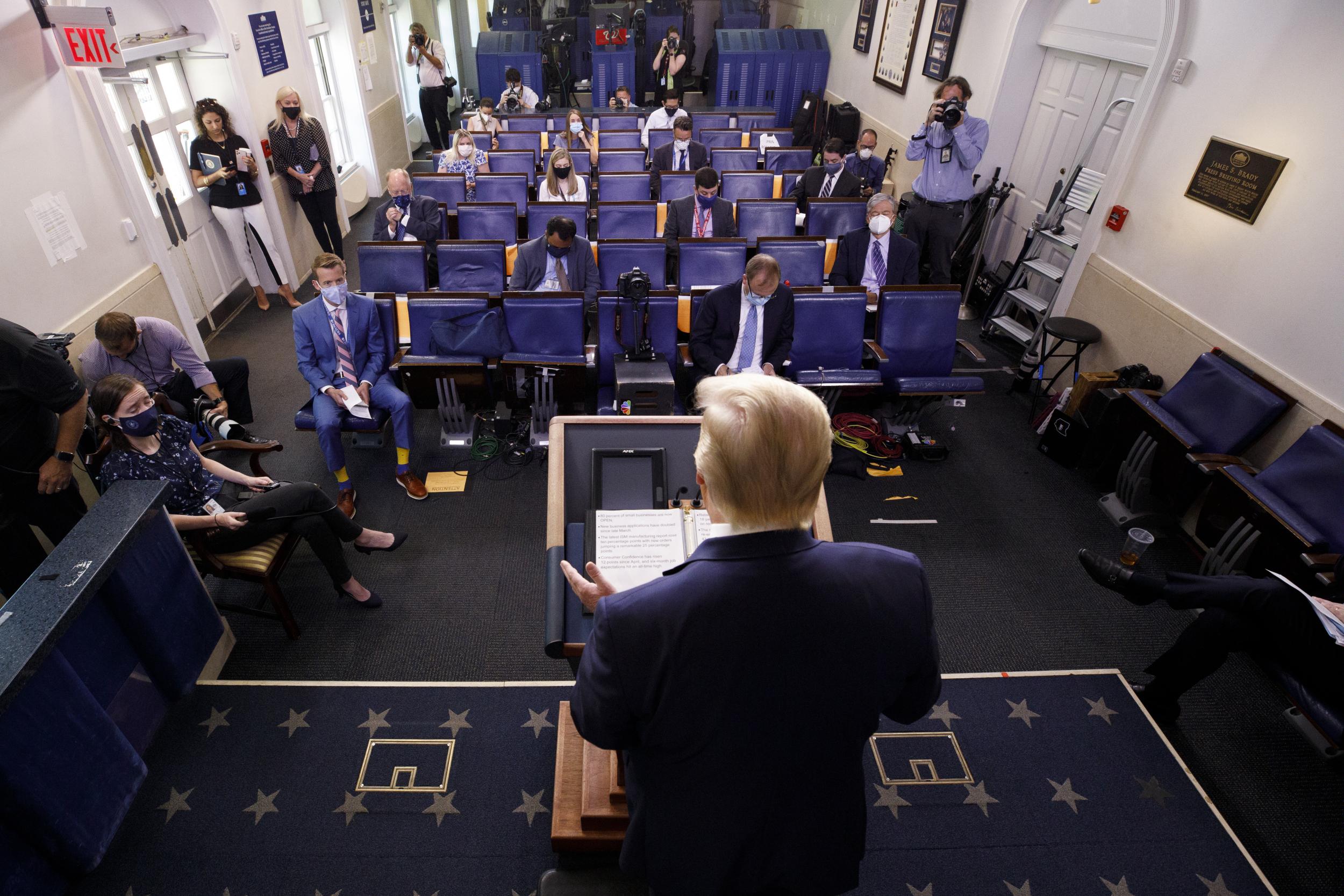Boris Johnson to introduce White House-style televised press briefings in overhaul of No 10 communications
Downing Street expected to recruit experienced broadcaster to front questions from press
Your support helps us to tell the story
From reproductive rights to climate change to Big Tech, The Independent is on the ground when the story is developing. Whether it's investigating the financials of Elon Musk's pro-Trump PAC or producing our latest documentary, 'The A Word', which shines a light on the American women fighting for reproductive rights, we know how important it is to parse out the facts from the messaging.
At such a critical moment in US history, we need reporters on the ground. Your donation allows us to keep sending journalists to speak to both sides of the story.
The Independent is trusted by Americans across the entire political spectrum. And unlike many other quality news outlets, we choose not to lock Americans out of our reporting and analysis with paywalls. We believe quality journalism should be available to everyone, paid for by those who can afford it.
Your support makes all the difference.Boris Johnson’s government will introduce White House-style televised press briefings in a major overhaul of Downing Street communications.
No 10 is expected to recruit an experienced broadcaster to host the daily briefings and to answer questions from Westminster journalists, starting in October.
It comes after the government scrapped the daily coronavirus updates – fronted by government ministers – last month, but will continue to brief the public through this format when there are significant announcements or updates.
Speaking on LBC on Friday morning, Mr Johnson said those daily briefings had shown No 10 that, “People have liked more direct, information from the government on what’s going on… we do think people want direct engagement and stuff from us, so we’re going to have a go at that.”
Currently, journalists covering the government attend twice daily on-the-record briefings, which are hosted by the prime minister’s official spokesperson, who is a civil servant.

While this practice is expected to continue, a source told The Times that the new approach of introducing a daily televised briefing fronted by a broadcaster aimed to “introduce a culture of transparency and openness” to No 10’s communications.
Mr Johnson appeared to confirm that, while adding he would “pop up from time to time”.
For many years the White House has held similar briefings fronted by the administration’s press secretary and US presidents have often made appearances at them. Kayleigh McEnany is the fourth person to hold the role since Donald Trump entered the Oval Office in 2016 and her predecessors have included Sean Spicer and Sarah Huckabee Sanders.
It was also reported on Friday that Downing Street intends to significantly reduce the number of individuals working in government communications, with a limit of 30 press officers to each government department.
Responding to the plans, Theresa May’s former press secretary Paul Harrison, told Politico: “Whoever No 10 choose as their new spokesperson will almost immediately become one of the most visible people in the entire administration – with significantly more media exposure than any of the cabinet.
“Given the influence on evening news programmes the daily press briefings showed they could have, there’s a significant prize for Downing Street here to shape the agenda.
“The risk – one I know personally – is that at times briefing the press is necessarily a defensive exercise, and, bluntly, that won’t always look tremendous on television.”
The Independent has contacted No 10 for comment.

Join our commenting forum
Join thought-provoking conversations, follow other Independent readers and see their replies
Comments